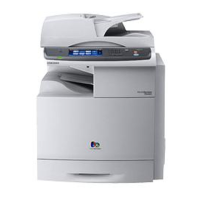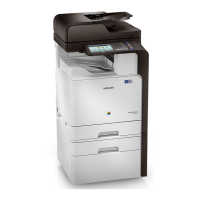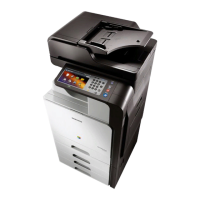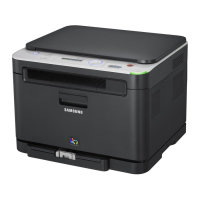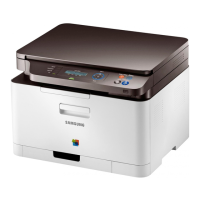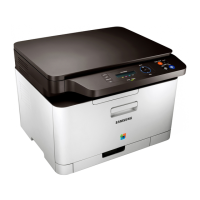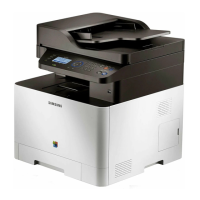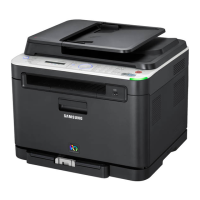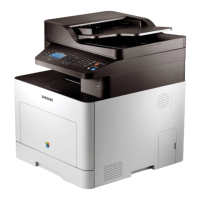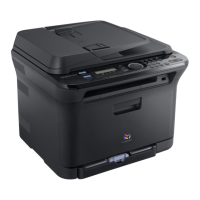5. Copying Page: 45 Copying originals Details the normal procedure for copying originals using the DADF or scanner glass.
Color Mode Options to select scan output color mode (Mono, Gray, Color) for faxing.
ID card copying Explains the feature to copy one side of an original onto the upper and lower half of a paper.
Poster copying Feature to print a document divided into multiple pages to create a poster.
Booklet copying Prints documents on both sides and arranges pages for folding into a booklet.
Watermark copying Allows printing text like "DRAFT" or "CONFIDENTIAL" diagonally across pages.
Overlay copying Copies original with stored data, like company letterhead, as a format.
Erasing edges Option to copy the original without any edges or margins.
6. Faxing (Optional) Page: 56 Preparing to fax Instructions on connecting the line cord and preparing the machine for faxing.
Basic tab Details the options available on the Basic tab for faxing, such as fax number input and address book.
Image tab Describes options for enhancing fax quality based on original type, darkness, and background.
Sending a fax Explains how to send a fax and special transmission methods.
Setting the fax header Instructions on how to set the fax number and machine name required by law in some countries.
Automatic resending Explains how the machine automatically redials if a fax number is busy or unanswered.
Receiving a fax Explains how to receive faxes and different receiving methods.
Using the polling option Explains how one fax machine requests another to send a document, useful when the original is absent.
Creating Mailbox Guides on creating and configuring mailboxes for storing fax data.
7. Scanning Page: 71 Using Samsung Scan Manager Information about the Samsung Scan Manager program for changing scan settings and managing saved documents.
Duplex Selects whether the machine scans one or both sides of the paper.
Resolution Adjusts the document resolution for clearer scan output.
Original Size Specifies the scanning area by selecting predefined size or using Auto mode.
Original Type Sets the original document type to enhance scan quality.
Color Mode Selects the color mode (Mono, Gray, Color) for the scan output.
Darkness Adjusts the degree of darkness for the scanned output.
Scan to Edge Sets the machine to scan full size of a page, including edges.
Quality Option to produce a high quality document with larger file size.
Scan Preset Uses optimized settings for specific scan jobs (Sharing/Printing, High Quality, Archival, OCR, Simple).
File Format Selects the file format (PDF, TIFF, JPEG, BMP) for the scan output.
12. Machine status and advanced setup Page: 95 Machine Setup Accesses machine setup options like Machine Status, Admin Setting, and Tray Management.
General settings Recommended machine parameters setup, including Device Info, Date & Time, and Default Settings.
Copy Setup Allows setting options in advance for copy output, such as page numbering.
Fax Setup Provides various options for setting up the fax system according to preferences and needs.
Network Setup Guides on setting up network protocols (TCP/IP, Ethernet, 802.1x) for the machine.
Security Features to control and lock outgoing data, change passwords, and manage user access.
Access Control Manages user authentication and authorization by classifying users into groups.
Log Options to enable/disable logging of job, operation, and security events.
Optional Service Enables and activates optional features by installing kits and configuring settings.
Printing a report Options to print various reports like configuration, fax, and scan confirmation reports.


